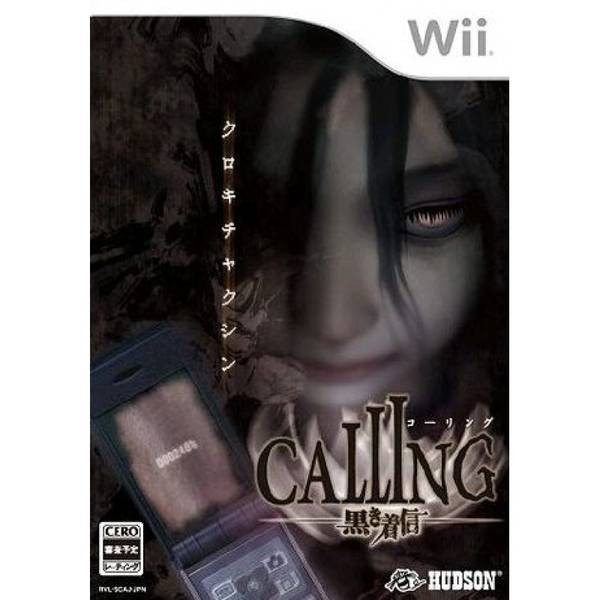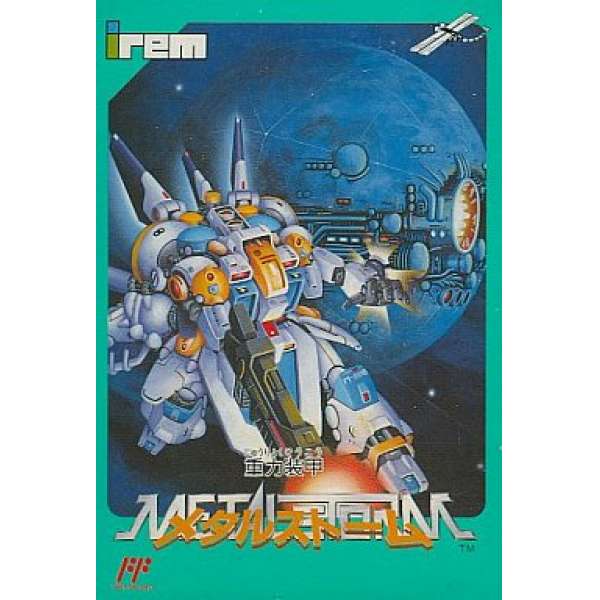恐怖電話~不祥鈴聲~
《恐怖電話~不祥鈴聲~》(Calling,又譯作(Calling~黑き着信~))是由日本Hudson Soft開發與發行,於2009年11月在日本Wii平台推出的第一人稱視角恐怖冒險遊戲。是專門為Wii設計的靈異系統作品,強調利用Wii遙控器模擬手機通話與探索動作,並以深具日本都市傳說風格的故事及濃厚氛圍見稱。故事圍繞一個都市傳說網站「黑之頁面」(Black Page)展開。據說只要在午夜時分登入這個網站,就會進入另個與現實平行、充滿亡靈與怨念的空間——「黑色空間」(The Mnemonic Abyss)。有四名被捲入這個網站的角色:女大學生Rin Kagura、男高中生Shinchi Suzutani、家庭主婦Chiyo Kishibe(Mie)、編輯Makoto Shirae。每個角色都有各自的背景與動機,他們被神秘力量困在黑色空間中,試圖逃離並揭開幕後真相。隨著劇情推進,會發現這一切與過去的悲劇事件,與名叫「Michio」的男子有關—因在生前遭受極大病痛,自殺身亡後靈魂無法安息。
操作方面,採用第一人稱視角進行探索與互動,使用Wii遙控器來控制視角方向,Nunchuk則用於移動角色。最具特色的是手機通話系統,Wii遙控器會模擬成遊戲內的手機,當角色接到來自黑色空間的電話時,遙控器會震動並發出詭異鈴聲,需將其放到耳邊傾聽來自另一端的低語或提示,有時更會聽到靈異的耳語或尖叫聲,強化沉浸式恐怖體驗。此外,在多個不同場景中進行調查,包括廢棄學校、老舊醫院、鬼氣森森的住家等地,解開機關、收集物品、回溯記憶片段,以逐步拼湊故事全貌。
冒險過程中不強調直接戰鬥,而是以解謎、逃脫與驚嚇為主,需時刻注意環境變化與靈異現象的出現。例如,鏡中反射出不存在的影像、地板突然破裂、背景傳來腳步聲等,透過音效與畫面營造出高張力氛圍。當接觸特定怨靈時,畫面會模糊並產生干擾,必須迅速逃離或完成指令才能避免死亡。這種設計增加心理壓力與代入感,使得即便沒有傳統意義上的戰鬥,也能產生高度緊張感。
在市場評價方面,獲得褒貶不一的回應。在日本,《Fami通》給出29/40分,稱讚其創意十足的手機互動與氣氛營造手法,但指出場景切換節奏偏慢,操作稍嫌不夠流暢。在歐美,IGN給予本作7.1分,肯定其低成本製作下仍有不錯的驚嚇設計,並認為以Wii遙控器模擬靈異通訊是新鮮的體驗。不過,也有評論認為遊戲節奏偏緩,缺乏強烈的劇情高潮,靈異事件的重複性略高,對部分玩家來說可能缺乏持續吸引力。
儘管如此,在Wii平台恐怖遊戲作品中仍有其一席之地。不是依賴血腥或突發驚嚇來嚇人,而是採取緩慢滲透的心理恐懼設計。那種「無處不在卻摸不著頭緒」的壓迫感、配合靜謐的音樂與幽微視覺特效,使其成為心理型靈異遊戲愛好者的隱藏推薦作。尤其對喜愛日式怪談或都市傳說題材的玩家來說,以其細膩的恐怖氣氛與悲劇色彩,提供與眾不同的Wii遊戲體驗。
"Calling" (also known as Calling: Kuroki Chakushin / コーリング~黒き着信~) is a first-person horror adventure game developed and published by Japan’s Hudson Soft. Released for the Wii in November 2009 in Japan, the game was designed specifically to make use of the Wii’s unique motion controls, focusing on supernatural horror experiences. It is particularly noted for its immersive use of the Wii Remote, which simulates phone calls and exploration actions, and for its atmosphere steeped in the mood of Japanese urban legends.
The story revolves around an eerie website known as the "Black Page." According to legend, anyone who accesses the site at midnight is transported to a parallel dimension filled with spirits and unresolved grudges—an otherworldly realm called the "Mnemonic Abyss." Four characters are drawn into this strange dimension: college student Rin Kagura, high school boy Shinchi Suzutani, housewife Chiyo Kishibe (also known as Mie), and editor Makoto Shirae. Each of them has their own personal backstory and reason for being entangled in this mystery. Trapped by a supernatural force, they must navigate the haunting world in an attempt to escape and uncover the truth behind the phenomenon. As the narrative unfolds, it becomes clear that everything is connected to a past tragedy involving a man named Michio, who, having endured intense physical suffering in life, ultimately committed suicide. His restless soul now haunts the realm, unable to find peace.
Gameplay is experienced from a first-person perspective, with players using the Wii Remote to control the camera and interact with objects, while the Nunchuk handles movement. One of the game’s most unique features is its cellphone mechanic. The Wii Remote acts as an in-game phone—when a character receives a call from the Mnemonic Abyss, the controller vibrates and plays a disturbing ringtone. Players must hold the remote to their ear to hear whispers, clues, or chilling screams coming from the other end, heightening the immersive horror experience.
Throughout the game, players explore a variety of ominous locations such as abandoned schools, derelict hospitals, and haunted homes. The core gameplay focuses on investigation and discovery rather than combat. Players solve puzzles, collect key items, and uncover memory fragments to gradually piece together the full narrative. Horror elements are delivered through environmental storytelling—reflections in mirrors that show things that aren’t there, sudden collapses of the floor, and unsettling ambient sounds such as distant footsteps. When encountering particularly hostile spirits, the screen distorts with visual interference, signaling immediate danger. Players must act quickly, fleeing or completing timed actions to avoid death. This system creates psychological pressure and a strong sense of immersion, effectively generating fear without traditional combat mechanics.
In terms of reception, Calling received mixed reviews. In Japan, Famitsu gave it a score of 29 out of 40, praising its inventive use of the cellphone system and atmospheric world-building, while criticizing the sluggish pacing and somewhat clunky controls. In Western markets, IGN rated the game 7.1 out of 10, acknowledging that despite being a low-budget title, it delivered effective scares and offered a fresh gameplay experience through its paranormal phone communication mechanic. However, critics also noted that the game’s slow pacing, lack of a strong dramatic climax, and somewhat repetitive ghost encounters could make it difficult for some players to stay engaged over time.
Nevertheless, Calling has carved out a niche within the Wii’s limited horror library. It does not rely on gore or sudden jump scares, but rather builds tension through a slow, creeping psychological fear. The sense of invisible dread—“something is always there, but you can never quite see it”—combined with minimalistic sound design and subtle visual effects, makes it a hidden gem for fans of atmospheric horror. Especially for players who enjoy Japanese ghost stories and urban legends, Calling offers a chilling yet emotionally nuanced experience, providing a distinctive horror journey unique to the Wii platform.
運費計算方式:
貨款滿1000元運費外加90元
貨款1000以下:買1件運費外加 60元,買2件運費外加 70元,
買3件運費外加 80元 ,買4件運費外加 90元
貨到付款外加30元手續費
外島及大陸地區運費另計
付款方式:
線上刷卡:本站採用Paypal線上刷卡
虛擬帳號匯款:屬於您專屬的虛擬帳戶,方便站長查帳使用,本站強力推薦
實體ATM匯款:請將匯款帳號記錄下來至各大銀行ATM提款機轉帳
超商條碼繳費:請列印本站提供的條碼至四大超商繳費
線上轉帳:透過玉山銀行線上ATM轉帳(此系統只支援IE瀏覽器)
貨到付款:本站採用黑貓宅急便貨到付款
其他注意事項:
如需購買線上點數卡請直接跟站長連絡,本站不提供點數卡的線上付款
-
恐怖電話~不祥鈴聲~
- 定 價: 6,090円
- 售 價: 650.00
- 庫存量: 1 套
- 已賣出: 0 套
 人氣指數: 0.5 / 6 顆星
人氣指數: 0.5 / 6 顆星 -
重力裝甲:金屬風暴
- 定 價: 6,825円
- 售 價: 0.00
- 庫存量: 0 套
- 已賣出: 0 套
 人氣指數: 0.4 / 6 顆星
人氣指數: 0.4 / 6 顆星


